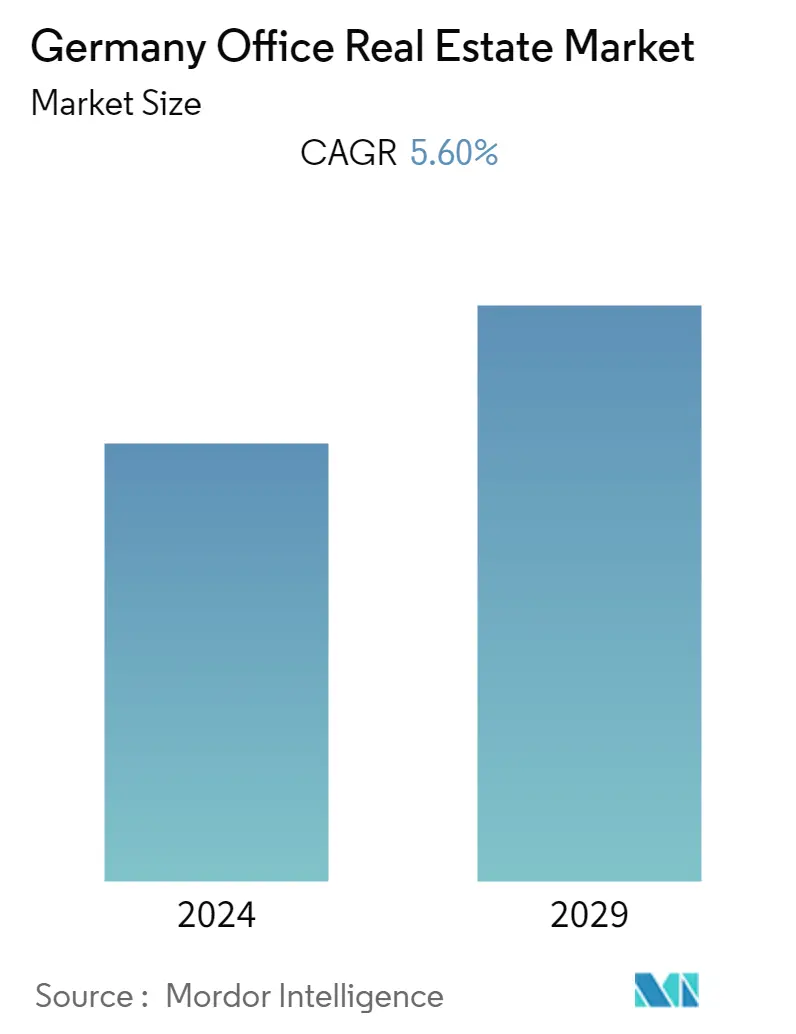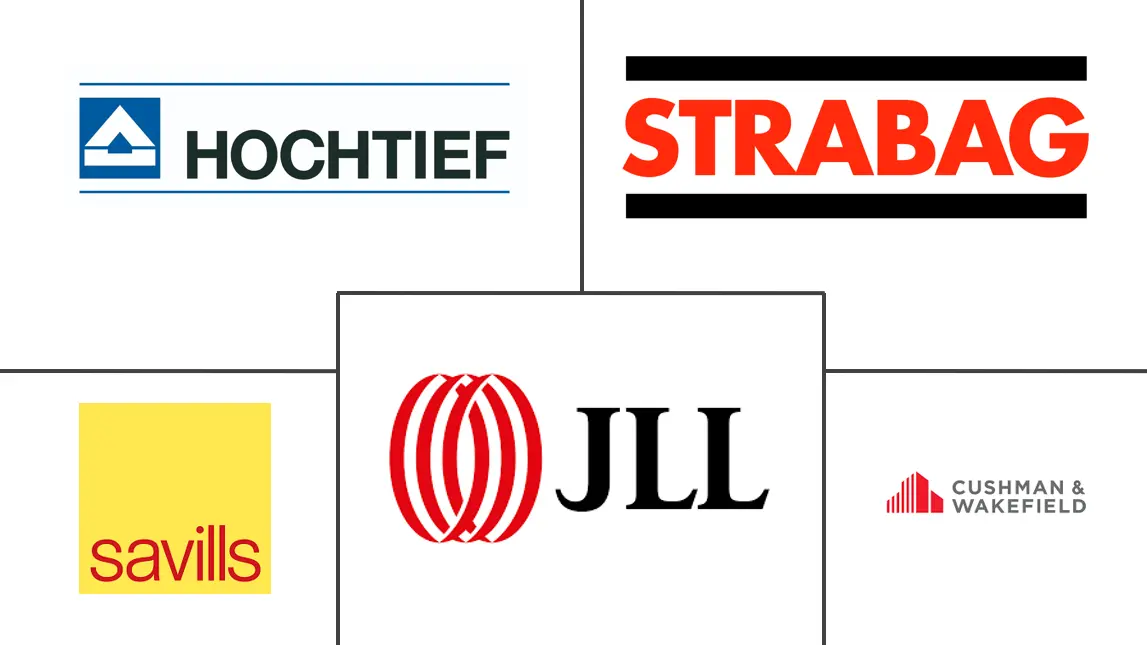Market Size of Germany Office Real Estate Industry

| Study Period | 2020 - 2029 |
| Base Year For Estimation | 2023 |
| Forecast Data Period | 2024 - 2029 |
| Historical Data Period | 2020 - 2022 |
| CAGR | 5.60 % |
| Market Concentration | Medium |
Major Players
*Disclaimer: Major Players sorted in no particular order |
Need a report that reflects how COVID-19 has impacted this market and its growth?
Germany Office Real Estate Market Analysis
- The German office real estate market is expected to record a CAGR of over 5.6% during the forecast period, 2022-2027. Due to restrictions, social distancing policies, and a work-from-home culture, the COVID-19 pandemic significantly impacted Germany's office real estate market, working habits, and locations. Due to the pandemic, the majority of businesses have implemented remote working. Exogenous shocks like the conflict in Ukraine, soaring inflation, and supply constraints are stifling the German economy. These factors have made economic activity considerably less than anticipated at the start of the year.
- However, the office market fared well in the third quarter of 2022 due to a balance between uncertainty and strong fundamentals. The big cities took up slightly under 2.8 million sq. m of office space in the first nine months of 2022, a 29% rise from the same period in 2021. This is where the current problem does seem a little different, especially given the rise in take-up in all of the Big 7 office strongholds. In Düsseldorf, it's just under 7%, but in Stuttgart, it's 200%.
- As the market for new-build space is still very competitive, making it difficult to pre-let space, and because there is growing pressure to get rid of outdated premises, many occupiers, particularly larger corporates, are currently moving forward with planned moves and new leases by up to two years.
- Most businesses are looking for office space with excellent standards to recruit and keep employees. An appealing workplace environment increasingly influences a company's business performance. About 43% of businesses intend to increase investment in a sustainable and flexible workplace between now and 2025, according to a recent JLL survey.
- Trends also suggest that much larger sums of money must be spent in existing stock to meet market demand and account for a drop in new construction activity, which can be profitable because most businesses are still prepared to pay a higher rental rate for a property that has been renovated sustainably and complies with ESG standards. Estimates indicate that by 2030, over one-fifth of all German office space will no longer adhere to European ESG requirements, demonstrating the urgent necessity for proactive solutions.
- Companies looking for office space have a total of roughly 4.6 million sq. m of short-term options in the big real estate powerhouses. However, vacancy rates will likely steadily increase, especially for lower-grade office space. The use of premium space makes up over 70% of the total office space. Unoccupied space caused by relocation that does not fit the needs of new tenants tends to stay vacant. This area can only be advertised due to large rental price reductions or after extensive renovations.
